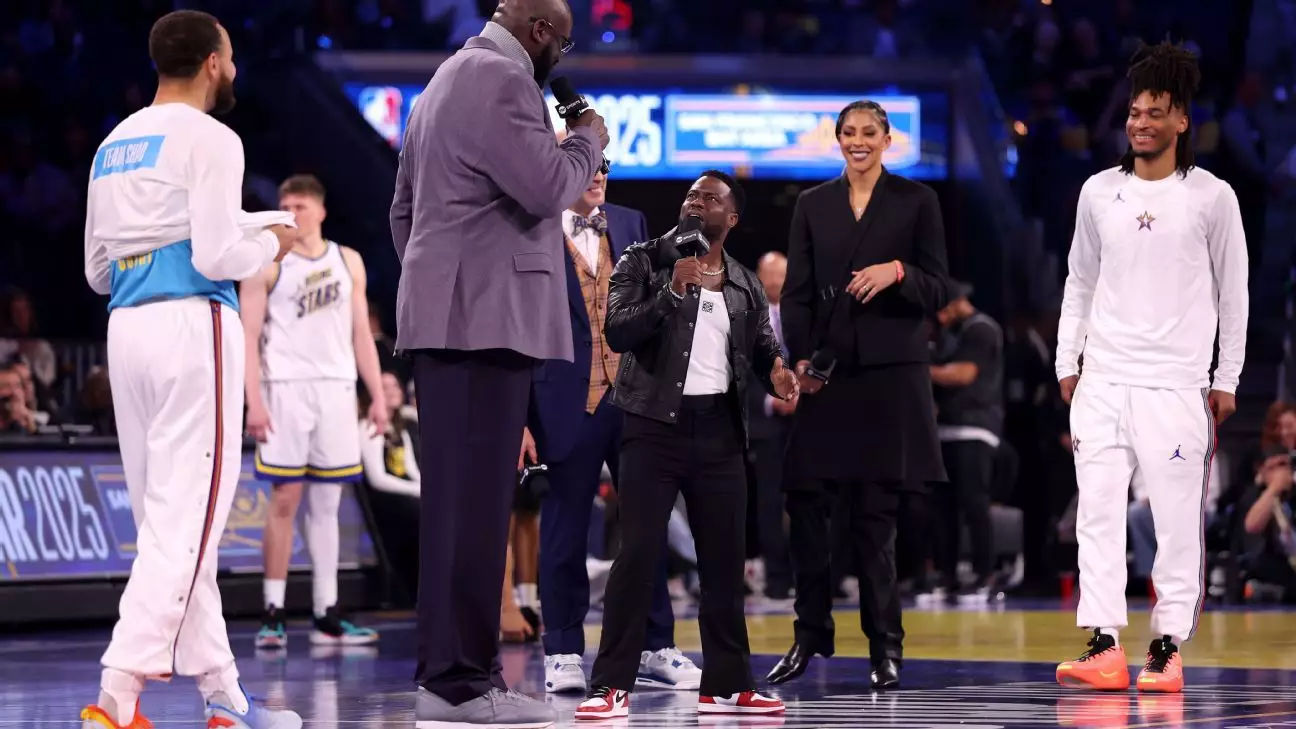The NBA All-Star Game has long been a celebration of the league’s elite talent, typically characterized by flamboyant plays and a festive atmosphere. This year, however, the revamped tournament format incited a whirlwind of mixed feelings among players and fans alike. The league’s decision to shift away from the traditional East vs. West matchup towards a four-team single-elimination structure brought both intrigue and frustration during the much-anticipated event at the Chase Center in San Francisco.
A New Format with Old Problems
The core of the All-Star Game has always been its engaging entertainment value, but this year’s change aimed to inject fresh excitement into the festivities. Under this new setup, teams were formed through a draft process, with legends like Charles Barkley, Kenny Smith, and Shaquille O’Neal each selecting their rosters. Meanwhile, the fourth team, helmed by Candace Parker, was composed of standout players from the Rising Stars event. While the players showcased their skills on the court, the frequent breaks and interruptions sparked significant debate.
Many players were vocal in their dissatisfaction regarding the excessive halts in gameplay throughout the event. Trae Young candidly expressed his views, stating, “I didn’t like it at all,” highlighting concerns over the abbreviated game time and prolonged breaks, which seemed to primarily serve television interests rather than the fans or players’ enjoyment. This sentiment was echoed by Shai Gilgeous-Alexander, who noted the interruptions compromised the intensity of the competition. Despite these concerns, he acknowledged the competitive spark that permeated the evening.
Stoppages and Entertainment: A Double-Edged Sword
The All-Star Game is synonymous with high scores and impressive displays of athleticism but juxtaposing this with entertainment interruptions revealed a palpable tension. Comedian Kevin Hart’s witty commentary and embedded entertainment pieces, although humorous, were viewed by several players as disruptive. A notable instance was during the championship game, which featured a nearly 20-minute break for a tribute to the TNT broadcast crew, marking their final All-Star Weekend editions. Players like Jaylen Brown voiced dissent about the need for fewer interruptions if physicality was to be encouraged on the court.
This debate raises questions about the essence of sports entertainment: should the focus be on uninterrupted gameplay and competition, or should it encompass broader entertainment elements? The players’ mixed feelings suggest a potential misalignment between entertainment objectives and athletic competitiveness, leading to moments of discontent in an otherwise celebratory event.
Not all feedback was wholly negative; a significant number of players experienced joy amidst the competition, suggesting that the redesigned format sparked a fierce sense of rivalry. Stephen Curry emerged as the game’s MVP, underscoring the genuine excitement and talent still present in this modified structure. Solutions and enhancements to the format may lie in fine-tuning the balance between performance and entertainment.
As Kevin Durant pointedly remarked, the format “took some getting used to,” highlighting that deviation from familiar structures can be challenging but might also pave the way toward revitalized competition. In these discussions, figures like Draymond Green emphasized a longing for traditional roles and values, particularly lamenting the presence of first- and second-year players in the event. His frustration emphasized a gap between legacy and emerging talent, further complicating the conversation around how All-Star status is attained and the integrity of its prestige.
With stars like LeBron James, Giannis Antetokounmpo, and Anthony Edwards sitting out due to injuries, the absence of prominent figures may have cast shadows over the event. Their omission presented a unique opportunity for younger players, but it also reinforced the necessity for a robust lineup to maintain the allure of such a marquee event in the league calendar.
The NBA All-Star Game’s new tournament format this year brought both excitement and challenges to the forefront. As discussions surrounding future improvements evolve, a consensus on how to blend competitive spirit with entertainment will be crucial. The feedback from players illustrates a desire for a more cohesive and thrilling experience that honors the game’s heritage while embracing necessary innovations. Enthusiastic players and committed fans alike wait eagerly to see how these insights shape the All-Star Weekend’s future.



Leave a Reply